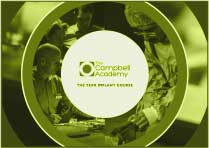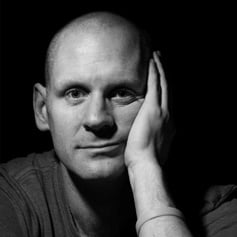
And so, as I said yesterday in the blog, I finished for my little sabbatical/holiday/decompression break or whatever you want to call it on Tuesday at about 6 p.m.
It had been planned for a while for Tuesday to be the last day as I had a surgical session in the morning and then our Christmas team fuddle in the afternoon, which has now grown into the most extraordinary celebration over the last 12 years.
We had a big mass feed up, followed by a team day in the afternoon where everyone was too full to pay attention to much, but we planned all of our charity activity and fundraising events and partners for 2023 and beyond in that afternoon.
In the morning I saw some patients for chats and diagnostics and bits and bobs, and then had one upper anterior aesthetic implant to place.
This is my area of work and one of the things that I pride myself in being able to understand, but the case that I did on Tuesday was very different to the way I would have carried that case out a year ago on the same day.
The reason for that is I have learned tonnes in the past year about the upper anterior cases that I've done for so long, and I've worked with people and seen people do things which are wonderful and extraordinary, which has moved my practice on.
And so, I thought, as I was doing the case and working with Becky, who is my long-term surgical partner and most experienced nurse who's worked with me, that I’d be able to write about that and how it was a wonderful way to finish for almost seven weeks doing something that brought into play all the stuff that I'd learned over the last year and all the stuff that I enjoy doing.
And so, I completed the case. The patient was really nervous and really frightened and in fact was absolutely delighted by the time we’d finished, and it was much better than they expected.
Following completion of the case I walked past treatment room 5 (Andy’s room on Tuesday) and I saw one of my favourite patients who I have looked after for many years.
Let's call the patient Margaret (obviously anonymous, could be a man, could be a woman or other from any country in the world).
I waved at Margaret and pretended to run away before popping into the surgery to say hi, because I've looked after her for the longest time.
Recently, I extracted all of Margaret's lower four anterior teeth and immediately placed two implants in this area.
I photographed the case, and it was extraordinarily good, and I was delighted with the surgical result.
She returned back to Andy for reconstruction of the case, which was going to be extraordinary and wonderful and terrific and photographed to a standard that I could travel around the world and explain to people exactly what I had done.
But when Andy came to reconstruct and to tighten the bridge into position, one of the implants twisted and was removed.
This does happen to me from time to time and although it's depressing and distressing, we always look after the patient's and work with them, and we all understand that it is just part of the job.
And so, Margaret had attended to have her new bridge fitted after I had replaced that implant and was in on the morning of my last day before the sabbatical.
I realised what she was here for and thought it was another great opportunity to pop in and see someone unravel in my wonder and brilliance at what we provide and how good I am as a surgeon/husband/friend/father etc etc etc. only to realise that as Andy connected the bridge again, the same implant came out again.
So, it's not unheard of for me to have an implant fail twice in a site, and it's never unheard of for me to have an implant fail.
I measure my implant outcomes, and we do as a practice year on year, and I have some quite detailed statistics on implant survival and success over the past 14 years.
I generally run at about 2.5% early implant failure, and that is consistent across the board and in keeping with all of the systematic reviewed literature on that subject. It doesn't mean that I like it and it doesn't mean that I'm happy to accept it, but it goes with the territory as far as we are concerned and it's consistent across all of our clinicians.
It means that if I’ve placed somewhere north of 6000 dental implants (and I have) and if I’ve lost some implants later, other than early failures, I've probably lost hundreds and hundreds of implants over the past 25 years, but it still doesn't make it any better.
The point is, though, that you shouldn't celebrate too high with the highs and never too low with the lows.
It was one thing coming from treatment room six when I had just finished surgery that I was delighted with (the patient's implant was still in place after 15 minutes!!!) but it's another thing to walk around the corner and see a patient who's had a complication or difficulty.
And so, the last patient I saw before I finished for my Sab was a patient with a complication and a difficulty and that there is just a lesson for life.
People will ask ‘are you excited about going on holiday?’, ‘Are you excited about being off?’, ‘what you're going to do?’ ‘how great is it going to be?’. But in truth, life just goes along as life goes along.
I will sort Margaret out (in fact, Andy really kindly agreed to help me do that while I was away) and she will be absolutely fine because we always look after people in these circumstances.
But it's just a little reminder that happiness doesn't come from the great case or the poor case. Happiness comes from somewhere else.
Blog Post Number - 3303





Leave a comment